Price objections are part of selling insurance. Even with the most comprehensive coverage, with bells, whistles, and a cherry on top, someone will still say, “Yeah, but it’s more than I wanted to spend.”
You can drop the price and your commission in your response, or you could do what the best agents do: show them the value so clearly that price becomes a smaller part of the equation. Let’s explore how to do that with a natural, conversational approach without sounding like you’re reading a script.
Start With Really Listening
Don’t get defensive if someone tells you your quote is too high; get curious. Try asking questions like:
- “Can I ask what you’re comparing it to?”
- “Is the premium the only thing you’re worried about, or is there something specific you had in mind?”
Often, it’s not about money but a lack of trust, confusion about the product, or something they think they understand but don’t.
Here’s what this conversation can look like:
A prospect says, “[name of insurance company] quoted me $40 less monthly.” You might respond, “Good to know! Do you know if that quote includes full coverage or just liability? A lot of times, those online quotes look cheaper because they leave out coverages you need.”
You just opened the door for an honest comparison and changed the prospect’s perspective.
Translating Features Into Real-Life Situations
Many agents talk about policy features like “comprehensive coverage,” “endorsements,” or “actual cash value.” These agents forget that prospects don’t live in the world of policy terms like agents do, so these terms are meaningless.
Prospects live in the real world, where people get sick, older people need care, or need more income when they reach retirement. Successful agents frame these policy solutions in real-life terms and situations that the prospect relates to or understands.
Instead of saying:
“This policy addendum provides supplemental vision coverage.”
Say:
“You can pay for additional vision coverage that covers routine eye exams and eyewear your family needs. This coverage lowers the out-of-pocket money you pay for these items your family needs.”
This makes the coverage relevant to where the prospect is in life and makes it much easier to relate to their life. This relatability starts people down the path to seeing value beyond the premium.
Break Down the Cost vs. the Risk
You’re not just selling a product but helping a prospect avoid financial chaos. Agents need to remind prospects of this component in their conversation like this:
“I totally get wanting to save money, but the $20 more a month protects you from one accident that can cost $50,000 or more to you. This $20 protects your savings and future from that $50,000 expense.”
Want to go further? Do a little math on paper (or screen) like this: “Over a year, that’s $240 more, but it protects you against tens of thousands in out-of-pocket costs. That’s like 65¢ a day for way more peace of mind.”
You’re now speaking in real-life costs they relate to, which is the language prospects want and need.
Highlight the Personal Touch
People don’t always say they value personalized service, but they notice when it’s missing. Make this service part of your conversation:
- “You’re not just getting a policy, but a person who answers when you call with questions or concerns. If there’s a claim, I’ll be the one helping you, not a call center queue or chatbot.”
- “Last week, a client got hit by an uninsured driver and sent to the hospital. I walked them through every step of the claim and how much they’d probably have to pay for the hospital visit. That’s not something an online quote gives you.”
This is how you show care and respect for their situation while providing the financial protection your policy solution delivers, making you more than a line item in the client’s budget.
Know When and How to Walk Away
Closing every deal is tempting, but some folks aren’t your people and chasing them will burn you out. You need to know “when to say when” and how this ending should occur by keeping it professional:
“I totally respect your position, so if you decide you want to revisit things or have questions down the line, I’ll be here.”
This keeps the door open without making you seem desperate. Many of these “price-first” shoppers return later once they realize the lower price quote didn’t include much help when they needed help.
Create a “Why Me?” Cheat Sheet
Keep a one-pager or email template you use when clients push back on cost. Make sure you include:
- What you review in a policy (not just price but also gaps, liability, etc.)
- Services you include (claims help, annual reviews, bundling options)
- What makes you different (your response time, real-world experience, etc.)
You won’t have to scramble to address inquiries when you’ve got a value statement ready with that personal element included.
Price Gets Attention, But Value Gets the Business
No one loves paying for insurance, but they want a good night’s sleep knowing they’re covered when life gets messy. Your job isn’t to be the cheapest but to ensure they’re receiving the best value they need and peace of mind.
When a prospect says, “It’s too expensive,” don’t hear “No.” Hear, “I need help seeing what I’m getting for the money.”
And that is a conversation you know how to win now. Do you need help prepping for this conversation, or maybe you want a second set of eyes on your one-pager or email template before you hit send?
Agility market managers and product specialists are licensed insurance agents with personal experience developing these pitches. They’re ready to share this expertise with each of you to raise your handling price objections game to the next level.
Contact the market manager near you or the Agility product specialist you need. You can also contact Agility at (866) 590-9771 or email support@enrollinsurance.com to contact the agent support team for assistance or anything else you may need.
Let Agility use our sales peers’ experience on your behalf to develop your professional handling of price objections so that you can successfully deliver your first or next big deal, which will positively impact your bottom line.



